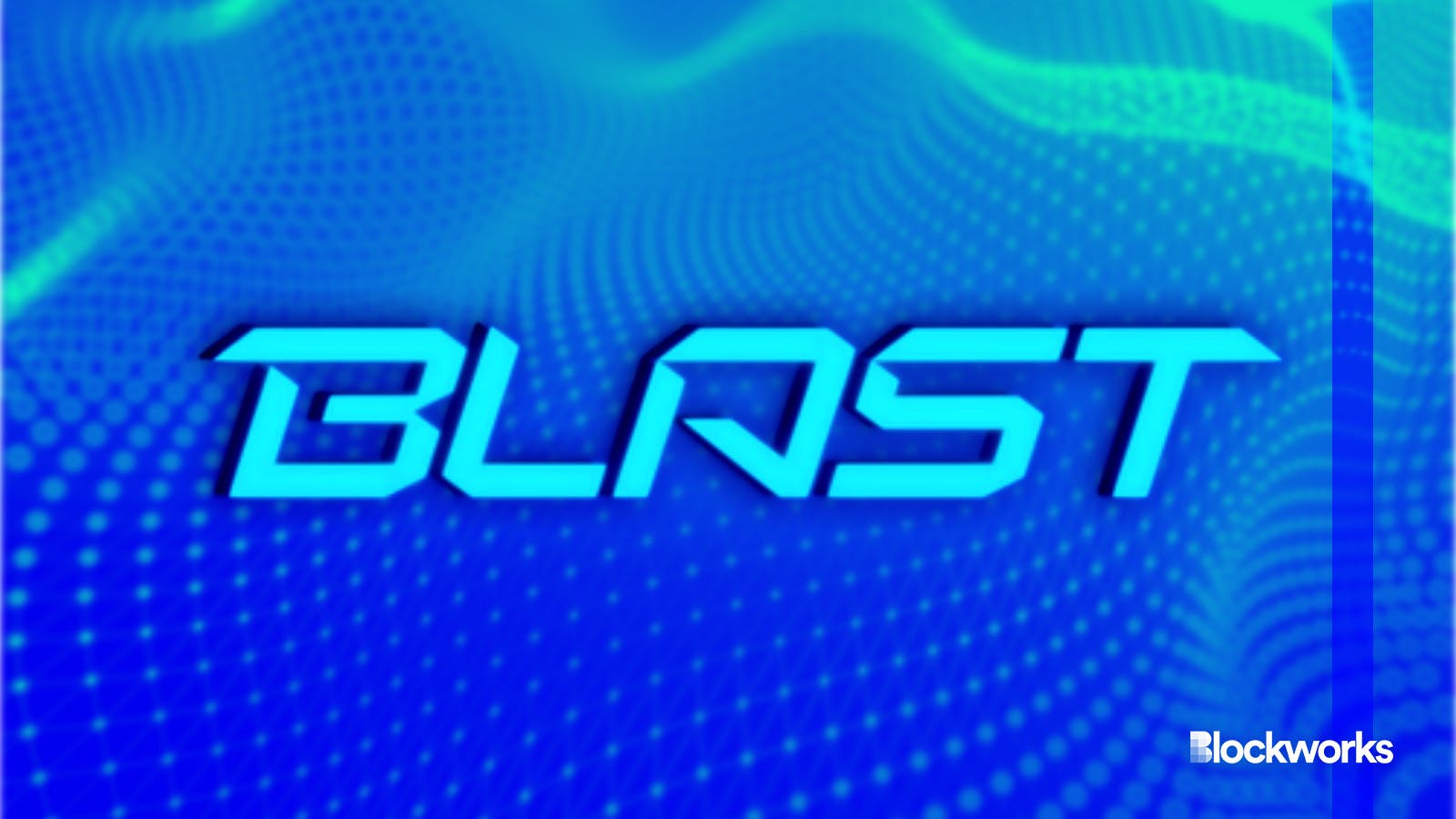Blast developers drawn by layer-2’s liquidity and founder’s success building Blur
Protocols built on Blast have accrued nearly $1 billion in TVL in the two weeks since the layer-2 went to mainnet

Blast and Adobe Stock modified by Blockworks
When the heavily-marketed layer-2 Blast went to mainnet late last month, so did a host of protocols built atop the optimistic rollup.
Blast drew over $2 billion in deposits before launching — but faced criticism for initially soliciting the funds to a multisig wallet before its layer-2 had been built. A number of protocols were willing to brush that aside, though: DeFiLlama lists 50 protocols deployed on Blast cumulatively holding nearly $1 billion in total value locked (TVL).
Blast said over 3,000 projects entered its “Big Bang” developer contest to go live on mainnet launch and receive a larger allocation of the protocol’s airdrop.
Read more: Wannabe L2 Blast bursts onto scene promising high ETH yield — in 3 months
Among the developers Blockworks spoke to about building on Blast, a couple major draws that emerged were the protocol’s success in acquiring users and liquidity, as well as founder Tieshun Roquerre’s established track record with the NFT marketplace Blur.
Blast first pitched itself as a layer-2 with “native yield” — meaning holdings are compounded on yield-generating venues like Lido and MakerDAO. The rollup is a fork of the second-largest layer-2, Optimism.
The metaverse-adjacent protocol Entertainm was partly motivated to build on Blast by the native yield and Blast’s pledge to reimburse some gas fees to developers. Entertainm can stake the reimbursed fees to grow its treasury, the project’s pseudonymous chief marketing officer Renata said in a direct message.
Vertex, an Arbitrum-native decentralized exchange (DEX), made Blast its first cross-chain deployment. Its forked DEX, called Blitz, doesn’t even let users trade yet — but that hasn’t stopped over $15 million in TVL from being bridged to the protocol from roughly 5,000 unique wallets, Vertex co-founder Darius Tabai said.
Tabai said Vertex began considering deploying on Blast after seeing the user excitement surrounding the layer-2. This was particularly true in Asia, where Vertex has a strong presence. Tabai was also drawn to Blast’s founder Roquerre, known online as Pacman.
Roquerre has “much more of a successful Web2 founder-type mentality than some of the more academic outlook that can exist in blockchain. And I think we’re sort of attracted to that kind of pragmatism. ‘Build things that people want to use and get them to use it’ is a way more exciting story to us than ‘be 10% better on TPS [transactions per second],’” Tabai said.
Currently in his mid-twenties, Roquerre went through the famous startup incubator Y Combinator as a teenager before enrolling in and dropping out of MIT. In 2022, he co-founded an NFT marketplace named Blur that unseated OpenSea as the largest NFT marketplace by trading volume.
Read more: Blur blends DeFi and NFT market with new lending platform
Blur grew partly through a “points” system where users were given IOUs for bidding, listing, or lending on the platform. Users’ points determined their allocation in Blur’s eventual token airdrop.
Some of Blur’s volume spike has also been attributed to wash trading, where users sell NFTs to themselves to do things like drive up prices or farm for points allocations.
Much of the depositing frenzy on Blast has been driven by a points system similar to Blur’s. Blast says on its website some sort of Airdrop will be distributed to points holders in May.
One founder deploying a project on Blast said they started building on the protocol partly as a bet that Roquerre would repeat the success he saw at Blur. Blast’s deep liquidity — it has nearly already surpassed Optimism as the second-largest Ethereum rollup by TVL, per DeFiLlama — was also a draw.
Despite any qualms with the tech, demand for Blast was clearly present.
“Initially I was like, ‘Oh wow, this is crazy.’ But as the number goes up, and as people still commit their funds…I mean, personally, I did not deposit on Blast. But you know, as other people do it, I’m like, ‘Okay, as a developer, if there is demand of people willing to take that risk, then I can be offering a product on that chain,’” they said.
Read more: Blast launch leaves users confused about withdrawals
The founder mentioned that the participation of Paradigm, a well-regarded crypto venture capital firm, increased their confidence in the project.
Paradigm participated in Blast’s $20 million November seed round. Days later, Paradigm head of research Dan Robinson wrote on X that Blast’s launch “crossed lines in both messaging and execution.” In December, Robinson said the VC firm worked with Blast to redesign its upgrade system and “set a better precedent for future projects who may try to emulate them.”
Get the news in your inbox. Explore Blockworks newsletters:
- The Breakdown: Decoding crypto and the markets. Daily.
- 0xResearch: Alpha in your inbox. Think like an analyst.






